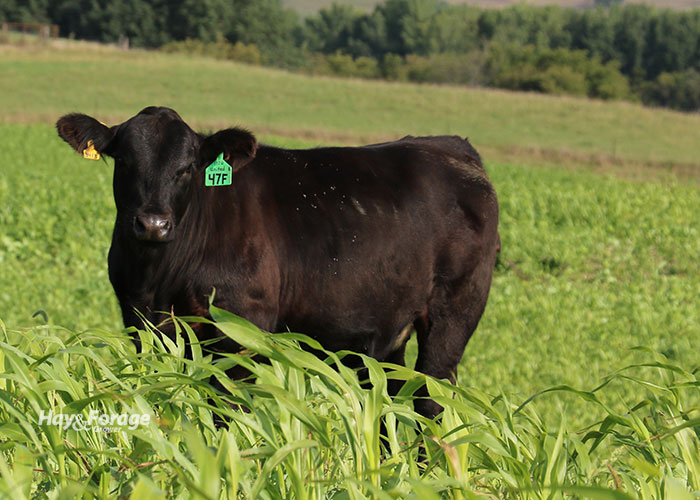
With the first day of summer in the rearview mirror, temperatures are only expected to accelerate. Forage production, on the other hand, will likely slow down. This is when summer annuals can take the wheel and keep forage production on track for the remainder of the season.
Sorghum-sudangrass and pearl millet are among the most popular summer annuals. Proper management of these grasses begins with planting in the spring. When soil temperatures reach 65°F, seeds can either be broadcast or drilled 2 inches deep.
Although these forages can be cut for hay, Charlotte Meeks with University of Georgia Extension states the best way to harvest summer annuals is to graze them. Livestock will selectively graze young growth first, so begin grazing at preboot stage. Rotating cattle is one way to do this effectively.
“While continuous grazing may be the easiest way to manage livestock, it is not the best option when grazing warm-season annual grasses,” Meeks advises. “Rotational grazing will allow for a rest period for regrowth, reduce waste, and prolong the stand.”
Graze pearl millet when it is 20 to 24 inches tall. To prevent plant injury and ensure successful regrowth, remove animals when it is 4 to 6 inches. Sorghum-sudangrass can also be grazed once it has reached 24 inches, but animals should be removed when the plant is 8 to 12 inches in height. Regrowth begins at the node on sorghum-sudangrass as opposed to the basal bud on pearl millet, so it cannot be grazed as short.

Meeks points out sorghum-sudangrass hybrids have the highest yield potential of summer annuals – as long as they receive adequate rainfall or irrigation. Brown midrib (BMR) hybrids are also available, and this characteristic is preferred among producers because of lignin content and higher digestibility.
Know the risks
Despite the benefits sorghum-sudangrass can bring to a grazing system, it is subject to prussic acid toxicity. Keep cattle away from sorghum-sudangrass for four to five days after a frost, allowing prussic acid to dissipate. Follow up with a forage analysis to make sure levels are low enough for cattle to return to the field.
High nitrate levels may also be a problem in sorghum-sudangrass, as well as pearl millet. This can occur during drought stress, especially after nitrogen fertilization. Conduct nitrate testing before grazing in these conditions.
Even though it can encourage high nitrate levels, fertilization is still an important step in managing summer annuals. Meeks recommends applying 40 to 60 pounds of nitrogen per acre at establishment, and an additional 50 to 60 pounds per acre each month during the growing season.
“Fertilization is a must for warm-season annual grasses to reach their yield potential,” Meeks asserts. “To reduce the possibility of nitrate toxicity, split up your application of nitrogen during the growing season. When warm-season annuals are subject to drought stress, they should not receive a nitrogen application.”

Amber Friedrichsen is serving as the 2021 Hay & Forage Grower editorial intern. She currently attends Iowa State University where she is majoring in agriculture and life sciences education-communications with a minor in agronomy. Friedrichsen grew up on her family’s diversified crop and livestock farm near Clinton, Iowa.

